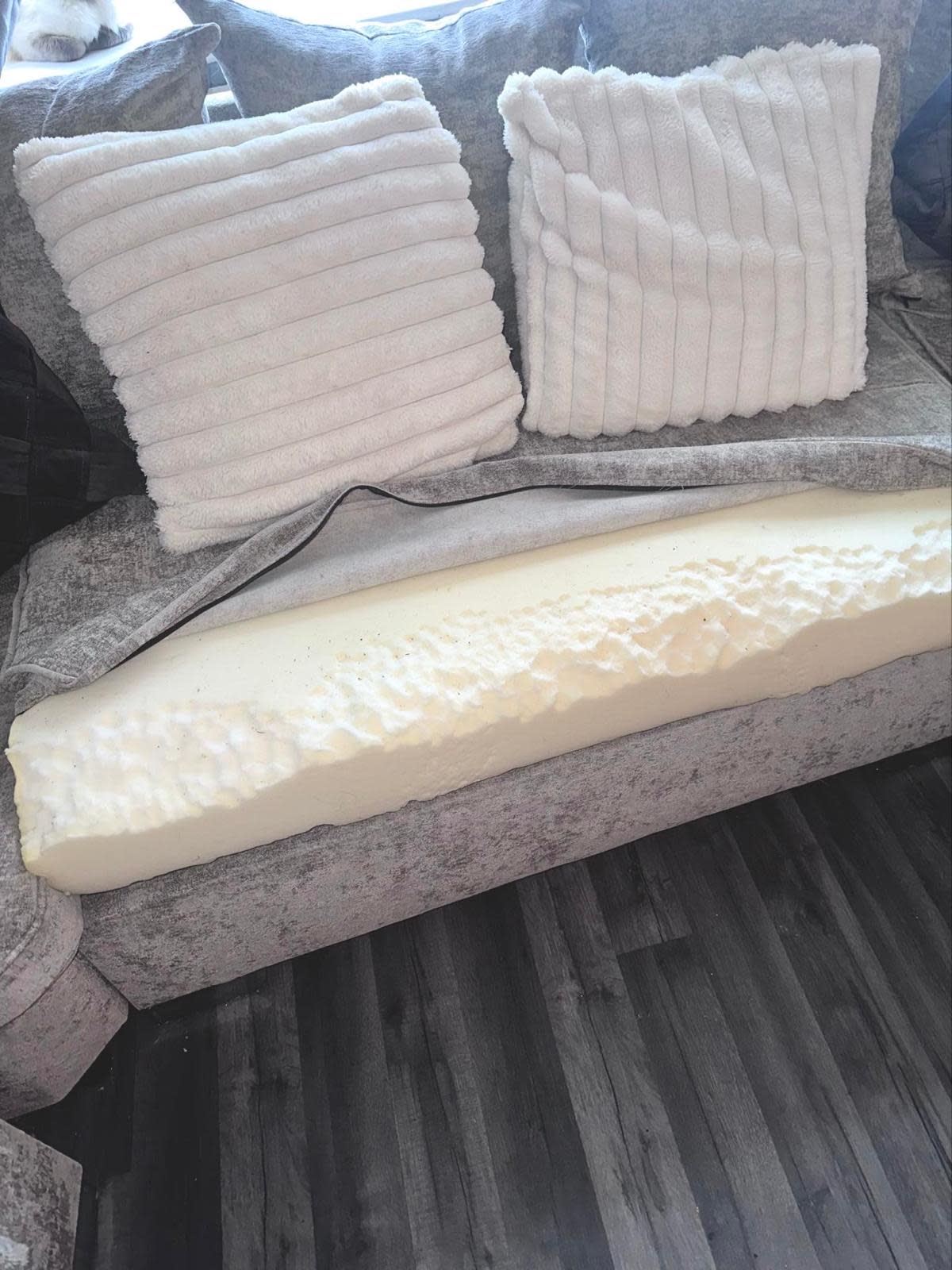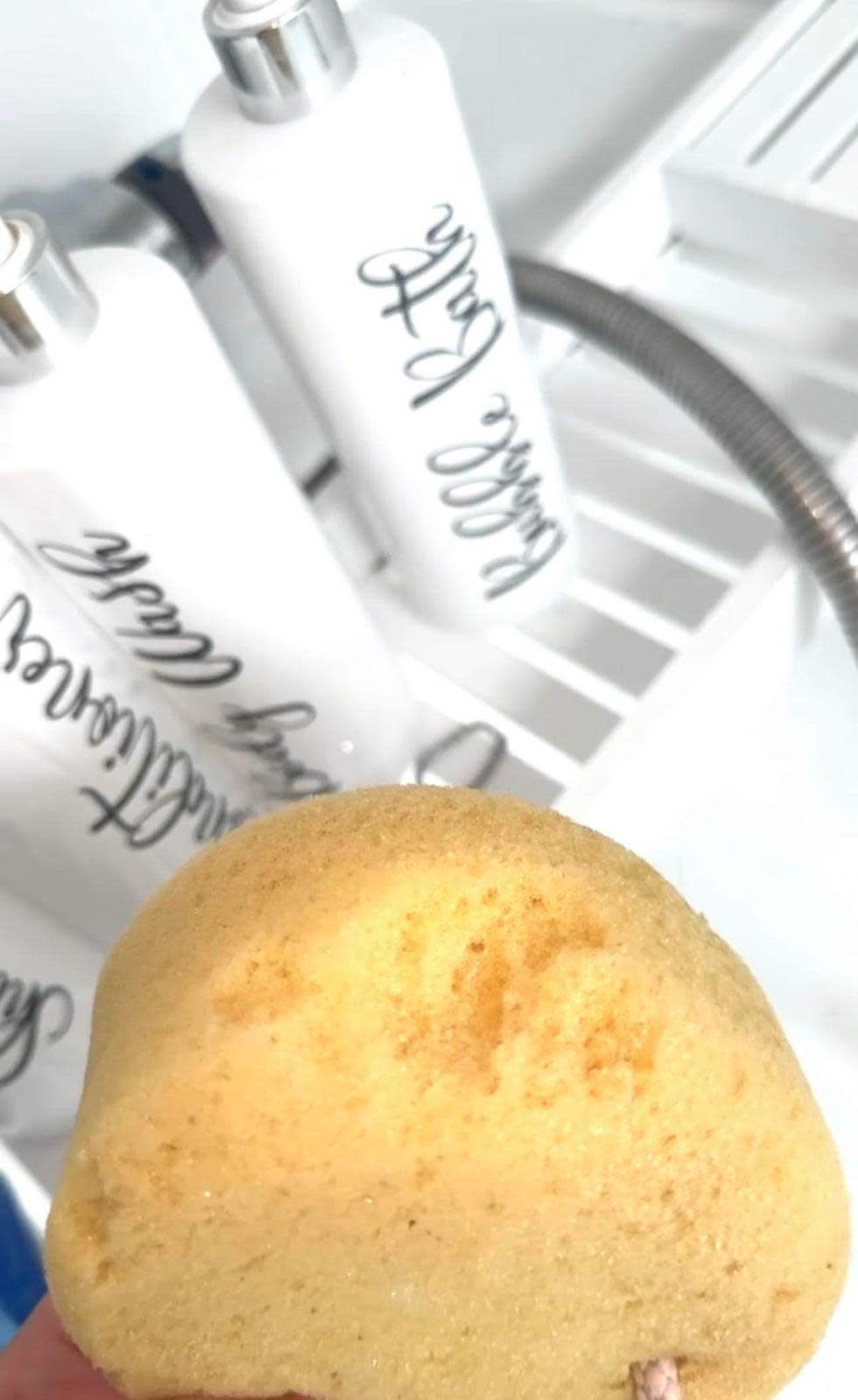What is pica? Rare eating disorder sees girl eat walls, foam and glass
Watch: Mum shares how her daughter eats plaster, sofa foam and glass due to rare eating disorder
A woman has opened up about her daughter's rare condition, pica, which sees her "eating the house", including the walls, sofa and even glass.
Stacey A'Hearne, 25, from Blackwood, Wales, has to constantly monitor her three-year-old daughter, Wynter, to stop her eating potentially dangerous items around their house.
Wynter has been diagnosed with autism and is also living with unusual eating disorder pica, which sparks cravings for inedible objects.

Stacey has caught Wynter eating plaster off the walls, foam from inside the sofa, and gnawing on the side of a highchair.
More worryingly, she has also watched her daughter smash photo frames and attempt to eat the shards of glass.
The little girl has even started waking up in the night to chew on her cot and the blanket she's sleeping with.

The mum-of-two, who is now a full-time carer for Wynter, says she needs to be on "high alert" due to the severity of her daughter's condition.
"She is literally eating the whole house," Stacey explains.
"I bought a brand-new sofa and she's taken chunks out of it.
"She's really fussy with normal food but she’ll sit and each a sponge.
"No matter what she finds a way to eat things that she shouldn’t.
"Luckily, she's never really hurt herself as I very closely monitor her.
"But it’s a full-time job watching her."

Stacey first noticed Wynter putting things in her mouth as a baby and didn't think it was a serious problem.
"Babies always put things in their mouth, but when she was doing it a lot I started to think it wasn't normal," she explains.
Wynter was hitting all the usual milestones - like talking and walking - until she was around 13 months old, when things changed suddenly.
Her mum explains that she became non-verbal and her unusual eating habits began to escalate.
Stacey reached out to her health care visitor who made some referrals to specialists and her daughter was diagnosed with the eating disorder pica.
A couple of years later, in January 2024, after further tests, Wynter was also diagnosed with autism - a developmental disability.

"Pica can be more common in children who have autism," her mum explains.
"I think it's a sensory thing, and she craves the different textures.
"She has very severe autism which means she doesn't speak much and has some behavioural issues."
Stacey - who also has one-year-old daughter, Everly - was a full-time mum to her daughters before becoming Wynter's full-time carer.
The mum-of-two has found her daughter eating plaster off the walls, wool from the inside of her toys, plants and candle wax.
"I put Wynter in the highchair with snacks, but she'll choose to eat the highchair," she explains.
"Her autism really affects her sleep, and she wakes up quite a lot and her pica really comes out to play at night.
"She wakes up at 2am and I've found her eating the cot and the blankets.
"It is exhausting to have eyes on her 24/7 but I've got into a good routine, and I understand her needs."

Stacey has found that providing "sensory play time" has helped distract Wynter from her pica cravings.
"Children with autism like sensory things they can touch or sounds," she says.
"I've got a chewable necklace for her with different textures which is specifically designed for people with pica.
"She'll also eat different shaped pasta, which she can touch or play with.
"The doctors said there's not much we can do," Stacey continues.
"It's not good for her but it's not extremely dangerous - as long is it's not glass.
"I just have to keep a really close eye on her and hopefully, she eventually grows out of it."

What is pica?
According to eating disorder charity, BEAT, pica is a feeding disorder in which someone eats non-food substances that have no nutritional value, such as paper, soap, paint, chalk, or ice.
"For a diagnosis of pica, the behaviour must be present for at least one month, not part of a cultural practice, and developmentally inappropriate," the eating disorder charity BEAT explains.
The condition is generally not diagnosed in children under the age of two, as it is common for babies to "mouth" objects, which can lead to them accidentally eating substances that aren’t meant to be eaten.
Possible signs of pica, according to BEAT include craving to consume substances that aren’t supposed to be eaten, eating substances that aren’t supposed to be eaten, physical illness as a result of eating harmful substances.
While pica affects people of all genders and ages, it is more likely to first appear among children and can also occur alongside other illnesses, including other eating disorders.
BEAT says the condition may also be more likely to occur alongside:
Pregnancy
Iron deficiency anaemia
Autism
Intellectual developmental disorders
Depression
Obsessive-compulsive disorder and related disorders such as trichotillomania (hair-pulling) and excoriation disorder (skin-picking)
Schizophrenia
It isn't fully understood why some people develop pica, but some experts have linked it to the nervous system, and have understood it as a learned behaviour or coping mechanism.
Though those with pica don’t usually avoid regular food, which means they may still be getting all the nutrients they need, BEAT says some non-food items that they consume can be very dangerous, especially if eaten in large quantities.
If you or someone you know has eaten something that isn’t supposed to be eaten, you should seek medical help immediately.
If you’re concerned about yourself or someone else, BEAT recommends visiting your doctor as quickly as possible so that they can refer you for appropriate treatment.
Additional reporting SWNS.
Eating disorders: Read more
'I lost five stone due to an eating disorder, but love helped me through' (Yahoo Life UK, 9-min read)
My weight loss journey took me from obesity to anorexia – but now I'm fit and strong (Yahoo Life UK, 7-min read)
Dr Alex George's eating disorder began after colleagues 'laughed' at his weight gain (Yahoo Life UK, 2-min read)


